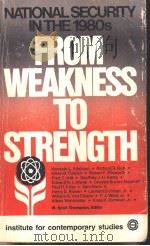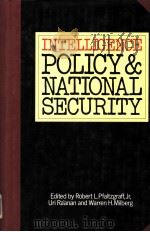《THE U.S.ARMY AND THE NEW NATIONAL SECURITY STRATEGY》
| 作者 | LYNN E.DAVIS AND JEREMY SHAPIR 编者 |
|---|---|
| 出版 | UNITED STATES ARMY |
| 参考页数 | 307 |
| 出版时间 | 没有确切时间的资料 目录预览 |
| ISBN号 | 0833033476 — 求助条款 |
| PDF编号 | 811855008(仅供预览,未存储实际文件) |
| 求助格式 | 扫描PDF(若分多册发行,每次仅能受理1册) |

Chapter One. INTRODUCTION1
Chapter Two. THE NEW NATIONAL SECURITY STRATEGY7
The U.S. National Security Strategy8
Maintaining U.S. Preeminence8
Defeating Global Terrorism10
Defusing Regional Conflicts11
Preventing Threats from Weapons of Mass Destruction13
Developing Cooperative Action with the Main Centers of Global Power14
The National Military Strategy16
Operational Flexibility17
Power Projection18
Operational Freedom and Coalition Support19
Homeland Security20
Transformation21
The Army's Transformation21
Conclusion22
References23
Chapter Three. THE U.S. ARMY AND THE OFFENSIVE WAR ON TERRORISM27
Introduction27
The Look of Things to Come30
Elements of the Offensive War on Terrorism30
Dealing with Unprecedented Threats and Uncertainty31
Affecting the International Environment: More People in More Places for More Time33
Enhancing Rapid Strike Capabilities: The Need for New Combinations of Combat Power and High Responsiveness38
What Does It Mean for the U.S. Army?43
Managing Expanding/Repetitive Deployments43
Modifying Tools in the Offensive Strike Arsenal49
The Need for Revised Overseas Basing, Prepositioning, and Support54
Summary and Conclusions55
References58
Chapter Four. DEFINING THE ARMY'S HOMELAND SECURITY NEEDS61
Introduction61
Providing for Homeland Security62
The Army's Approach to Homeland Security64
Homeland Security Environment: New and Uncertain65
Estimating the Army's Homeland Security Needs69
The Method69
Homeland Security Tasks71
Aggregate Homeland Security Requirements76
Structuring the Army for Homeland Security78
Implications of Homeland Security Requirements for Other Army Missions80
Conclusions and Recommendations80
References82
Chapter Five. THE SHIFT TO ASIA: IMPLICATIONS FOR U.S. LAND POWER85
U.S. Interests and Alliances in the Asia-Pacific86
The Asian Operating Environment87
Possible Security Challenge in Asia92
Implications for the U.S. Army95
Rapid Deployment96
Forcible Entry97
Defeat Antiaccess Strategies98
Minimize Sustainment Needs98
Forward-Deployed Forces99
Prepositioned Equipment101
Multipurpose Forces101
Building Ties with Militaries in Asia102
Ground Force Capabilities in Asian Contingencies103
Conclusion: The Hardest Change of All105
References107
Chapter Six. PREPARING FOR COALITION OPERATIONS111
Lessons Learned from Past Coalitions112
Coalitions Vary Tremendously in Their Size and Structure112
The Technology Gap Is Increasing113
Most Partners Lack Deployability and Sustainability115
Coalitions Rely Heavily on Liaison Teams116
Intelligence Sharing Remains a Constant Problem117
Military Planners Must Account for Political Requirements119
Recommendation for the Future121
Institutionalize an Army Liaison Capability121
Include Realistic Coalition Participation in Wargames122
Incorporate Coalition Support Requirements into Transformation Planning124
Develop a Database of Coalition-Ready Forces125
Conclusion127
References127
Chapter Seven. TRANSFORMATION AND THE UNFINISHED BUSINESS OF JOINTNESS: LESSONS FOR THE ARMY FROM THE PERSIAN GULF, KOSOVO, AND AFGHANISTAN129
Introduction129
The Move Toward Jointness at the End of the Vietnam War131
Goldwater-Nichols131
The Development of AirLand Battle Doctrine132
Jointness and the Campaigns of the Post-Cold War Era: The Persian Gulf War, Kosovo, and Afghanistan133
The Gulf War134
Jointness After the Gulf War136
Operation Allied Force: The Kosovo Campaign138
Afghanistan144
Army Transformation and Jointness147
Where Does the Army Go From Here?150
The Army Must Rethink the Nature of the Modern Battlefield151
The Army Must Reform Its Combat Structure to Become Part of the Joint Force155
The Army Must Rethink the IBCT156
Final Note157
References158
Chapter Eight. PREPARING THE ARMY FOR JOINT OPERATIONS163
Promoting "Jointness"163
Service Rivalry163
Systemic Changes164
Joint Control of Forces166
Current Doctrine166
The Predominant Service168
Control Measures169
Forming Joint Task Forces171
Standing Joint Task Forces Headquarters173
An Expeditionary Army174
Forcible Entry175
From the Air176
From the Sea177
Options for Using a Medium-Weight Force178
Air-Land Operations179
Contrast of Kosovo with Afghanistan179
Doctrine for Air-Land Operations181
The Special Operations Paradigm182
Suppression of Enemy Air Defenses184
Partnership Across All Operations184
Tactical Partnership185
Conclusion186
References188
Chapter Nine. MOVING RAPIDLY TO THE FIGHT191
Introduction191
The Army's Deployment Goals192
Implications of the New Army Deployment Goals192
Designing the Future Army Around Airlift193
Airlift Allocation194
Maximum on Ground and Port Capacity195
Army Deployment Goals Compared to Programmed Airlift196
The Strategic Mobility Triad198
Airlift198
Prepositioning199
Sealift200
Future Strategic Mobility: The Case of the SBCT201
Airlifting the SBCT201
Sealifting the SBCT206
Possible Deployment Enhancements207
High-Speed Ships207
More Airlift209
Increased Use of Prepositioning210
Conclusions214
References216
Chapter Ten. TAKING CARE OF PEOPLE: THE FUTURE OF ARMY PERSONNEL217
Recruiting the Right Talent219
Managing Assignment and Deployment223
The Effect of Deployment on Retention224
Managing Personnel and Unit Readiness225
Cost-Effective Training227
Compensating and Supporting Soldiers and Families228
Pay Comparability229
Retaining Families230
Compensation and Support in the Reserve Components233
Conclusion234
References235
Chapter Eleven. MAKING THE POWER PROJECTION ARMY A REALITY239
Strategies for Shrinking the Logistics Footprint241
The Strategy of Demand Reduction242
The Strategy of Modular Support244
The Strategy of Distribution-Based Logistics247
Extending These Strategies251
Conclusions252
References253
Chapter Twelve. RESOURCING THE TWENTY-FIRST CENTURY ARMY255
Has Strategy Driven Funding?256
Changing Strategic Planning256
Resource Allocation Effects of Changing Strategic Planning258
How Much Funding Might the Army Get?264
Past Patterns265
Too Much or Too Little?266
What Mix of Forces?267
Army Funding Prospects to 2010267
What Are the Resourcing Impacts of Terrorist Attacks?271
Global War on Terrorism272
Homeland Security272
Force Protection273
Budget Implications of the Global War on Terrorism274
Is the Army Transformation Affordable?275
Affordability Analysis278
Conclusion288
References288
Chapter Thirteen. REFINING ARMY TRANSFORMATION293
The Search for Faster Deployment295
Designing a Full-Spectrum Force297
Turbulence and Small Deployments299
And What About the Reserves?301
The Push for More Jointness302
Fighting in Coalitions304
Paying for It All304
Conclusion306
References307
《THE U.S.ARMY AND THE NEW NATIONAL SECURITY STRATEGY》由于是年代较久的资料都绝版了,几乎不可能购买到实物。如果大家为了学习确实需要,可向博主求助其电子版PDF文件(由LYNN E.DAVIS AND JEREMY SHAPIR UNITED STATES ARMY 出版的版本) 。对合法合规的求助,我会当即受理并将下载地址发送给你。
高度相关资料
-

- STRATEGY AND SECURITY IN U.S. -MEXICAN RELATIONS BEYOND THE COLD WAR
- 1996 UNIVERSITY OF CALIFORNIA
-

- Strategic power and national security
- 1971 University of Pittsburgh Press
-

- NATIONAL SECURITY AND INTERNATIONAL RELATIONS
- 1990 ROUTLEDGE TAYLOR & FRANCIS GROUP
-

- Strategy Security and Spies Mexico and the U.S.as Allies in World War II
- 1997 The Pennsylvania State University Press
-

- PUNISHMENT AND POLITICS THE MAXIMUM SECURITY PRISON IN NEW ZEALAND
- 1989 OXFORD UNIVERSITY PRESS
-

- The New Security Agenda:A Global Survey
- 1998 Japan Center for International Exchange
-
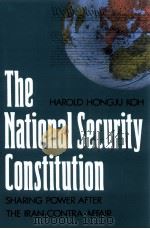
- THE NATIONAL SECURITY CONSTITUTION SHARING POWER AFTER THE IRAN-CONTRA AFFAIR
- 1990 YALE UNIVERSITY PRESS
-

- NATIONAL SECURITY AND THE U.S. CONSTITUTION THE IMPACT OF THE POLITICAL SYSTEM
- 1988 THE JOHNS HOPKINS UNIVERSITY PRESS
-
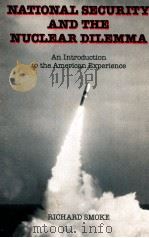
- NATIONAL SECURITY AND THE NUCLEAR DILEMMA AN INTRODUCTION TO THE AMERICAN EXPERIENCE
- 1984 ADDISON-WESLEY PUBLISHING COMPANY
-

- THE MANY FACES OF NATIONAL SECURITY IN THE ARAB WORLD
- 1993 ST.MARTIN'S PRESS
-

- National Security in the Third World The Management of Internal and External Threats
- 1988 Edward Elgar
-
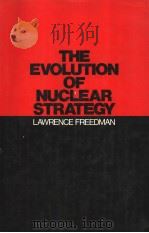
- STUDIES IN INTERNATIONAL SECURITY:20 THE EVOLUTION OF NUCLEAR STRATEGY
- 1981 THE MACMILIAN PRESS LTD
-

- Security Strategy and the Logic of Chinese Foreign policy
- 1981 Institute of East Asian Studies
提示:百度云已更名为百度网盘(百度盘),天翼云盘、微盘下载地址……暂未提供。➥ PDF文字可复制化或转WORD
